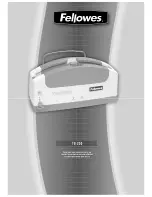
General Information
Service Manual – PBU Propane Floor Burnisher
6
Warning: The Products sold with this Manual contain or may contain chemicals that are
known to certain governments (such as the State of California, as identified in its
Proposition 65 Regulatory Warning Law) to cause cancer, birth defects or other
reproductive harm. In certain locations (including the State of California) purchasers
of these Products that place them in service at an employment job site or a publicly
accessible space are required by regulation to make certain notices, warnings or
disclosures regarding the chemicals that are or may be contained in the Products at
or about such work sites. It is the purchaser’s responsibility to know the content of,
and to comply with, any laws and regulations relating to the use of these Products
in such environments. The Manufacturer disclaims any responsibility to advise
purchasers of any specific requirements that may be applicable to the use of the
Products in such environments.
Warning: Deployment of a monitor/detector is essential for the safe operation of any
equipment that has the potential to produce CO. CO sensors/detectors became
available on the mass market around 1978. At present several brands sell in the
fifty-dollar range. The main differences between the technologies involved are
battery or electric and Semiconductor or Biomimetic types. Detectors for carbon
monoxide (CO) are manufactured and marketed for use in either the home or
occupational industrial settings. The detectors for home use are devices that will
sound an alarm before CO concentrations in the home become hazardous. There is
an Underwriters Laboratories, Inc., performance standard (UL 2034) for residential
CO detectors. Detectors currently available on the market are battery-powered, wall
mount, Operator worn portable personal protective, plug-in, or hard-wired. Some
models incorporate a visual display of the parts per million (ppm) concentration
of CO present in the home. For more information on CO detectors for home use,
call the Consumer Product Safety Commission Hotline at 1-800-638-2772. CO
detectors for use in residential settings are not designed for use in typical workplace
settings. Monitoring requirements in an occupational setting are different from
monitoring requirements in the home. In the workplace, it is frequently necessary
to monitor a worker’s exposure to carbon monoxide over an entire work shift and
determine the time-weighted average (TWA) concentration of the exposure. It may
also be necessary to have carbon monoxide monitors with alarm capabilities in the
workplace. The direct-reading instruments are frequently equipped with audio and/
or visual alarms and may be used for area and/or personal exposure monitoring.
Some have microprocessors and memory for storing CO concentration readings
taken during the day. It is significant to note that some of the devices mentioned
for workplace CO monitoring are not capable of monitoring TWAs, and not all are
equipped with alarms. The appropriate personal protective monitor must be chosen
on an application-by-application basis. For more information on the availability
of workplace CO monitors or their application, call the National Institute for
Occupational Safety and Health at 1-800-35-NIOSH (1-800-356-4674).







































